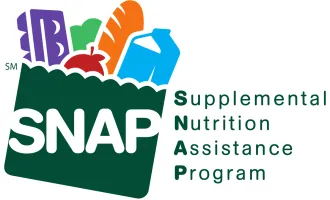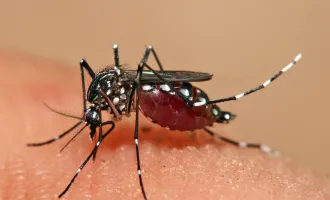
Talking Diversity and Inclusion
Discrimination complaint reports at UCSF totaled 284 during the 2016-2017 academic year: 20 percent were race related, 20 percent were sexual harassment, 10 percent were gender related, 10 percent were disability related, and another 12 percent were about retaliation. While UCSF has taken actions to promote diversity and inclusion on campus, it is clear that there is still much work to be done.
On Thursday March 8, these issues were discussed at the UCSF Student Leadership Forum on Diversity and Inclusion.
The forum was hosted by a panel of student leaders representing UCSF registered campus organizations (RCOs) dedicated to celebrating and supporting underrepresented groups in STEM education both on and off campus. Everyone in the UCSF community was invited to come learn and engage with these topics as a collective.
The event was organized by UCSF Biomedical Sciences (BMS) graduate student Aaron Mattingly in response to a key issue on campus: efforts for inclusion and diversity are de-centralized amongst different student RCOs, with each fighting for the same causes but not communicating with each other.
Instead of gathering together to commune over shared grievances, which does have its place, the goal of this forum was to unite minority and underprivileged groups in creating actionable items to improve our community.
Students at this forum discussed not just what is wrong with diversity and inclusion at UCSF, but how can we improve.
This distinction is critical. The emphasis on student-driven improvement empowers the individual to have a voice in shaping the university culture. At the same time, participants in this forum recognized that while the individual voice is important, the collective is stronger at enforcing change at a university-wide level.
One of the major issues discussed was the lack of staff and faculty involvement in supporting diversity education. Several panelists expressed frustration over those in role model positions not sharing in the responsibility of improving inclusivity at UCSF, feeling instead that the majority of the burden falls on the shoulders of students.
Cultural awareness and the feeling of acceptance are just as critical to a truly diverse campus as recruiting individuals from different backgrounds.
Panelist Denise Porter, representing the RCO Nursing Students of Color, described the crippling disappointment she felt when she moved to San Francisco and realized that the celebration of minorities emphasized during recruitment was not sustained in her day-to-day life as a student.
Microaggressions, or everyday verbal or nonverbal insults that target marginalized groups, whether intentional or not, were prevalent amongst her peers and in her classes.
Panelist Lisa Shwartz, speaking for disability advocacy and support at UCSF, explained the lack of understanding around the needs and entitled accommodations for students with disabilities. She stated beautifully that disability is a form of diversity, and that healthcare professionals with disabilities offer distinct perspectives that can uniquely relate to patient experience.
A microaggression here could come in the form of a faculty member believing they can choose what accommodations to make for a student with disability, or a colleague telling a student suffering from anxiety to just relax. They don’t necessarily come from mal intent, but are counterproductive to that student thriving.
These small moments of discomfort slowly chip away at a person, especially when we’re already struggling to excel in one of the most competitive and challenging fields. Pushing the bounds of medicine is difficult enough without feeling your personhood is being othered.
But how do we recognize these microaggressions?
They stem in part from a lack of understanding in a space where individuals from all parts of the world, all different backgrounds, health and economic statuses are brought together. If you haven’t been exposed to something, how can you know what term, action or assumption can be hurtful?
The UCSF Office of Diversity and Outreach, who reported the discrimination statistics mentioned previously, has developed programs aimed at educating the community on cultural awareness, including required compliance training, a diversity and inclusion staff certificate program, and quarterly diversity and inclusion training.
These steps are appreciated, but the panelists felt they are not sufficient.
Quickly clicking through a required module isn’t going to effectively teach someone about the experiences of underrepresented groups on campus or how to interact respectfully with these individuals.
Another challenge to address is how to engage members of the community who are not directly involved in diversity-driven RCOs.
An example of this challenge was this event itself: the attendance was dismal. Aside from the panelists themselves, Cole Hall was sparsely populated, with the audience being mostly comprised of members already active in the organizations sponsoring the event.
The intent was to create a space where everyone in the UCSF community felt welcome to engage in these difficult conversations, but that intent was not heard or understood.
During the forum, it was suggested that good role models of allyship in faculty can help promote inclusive behavior. In training us to be leaders in healthcare, our faculty should also be able to demonstrate what it means to respect and engage with diverse people.
Elizabeth Watkins, Dean of the Graduate Division, and Mark Ansel, BMS Program Director, were both in attendance. This support and willingness to listen from the graduate school was greatly appreciated, and demonstrated good allyship.
Good allyship means that you show up.
It can be sitting in on a Q & A panel, listening to the concerns of your peers and asking questions when you don’t understand. It can be speaking up in a classroom when you hear or witness something that might have left a colleague feeling othered. It can be volunteering through the Science & Health Education Partnership (SEP) in underserved classrooms to inspire students of all ages and backgrounds to pursue science and medicine.
One ally in the audience, BMS graduate student Lindsey Jones, brought up an important yet not often discussed point – when are allies welcome? Can anyone join a student group focused on a particular underrepresented population?
The short answer is to talk with members of that group. Many of them are dedicated to promoting awareness and outreach, which is benefited by every additional member.
Other groups are intended to provide a safe space for people with similar backgrounds to feel comfortable, and may prefer allies to offer support by attending only open events or advocating for them in difficult situations.
So what were the actionable items that came of this meeting?
First and foremost, leaders of these distinct student-run organizations are going to improve their intergroup communication by creating an inclusive listserv and planning regular meetings, like this one, to brainstorm improvements for supporting healthy and strong diversity at UCSF.
The gap in knowledge in students and faculty surrounding minority groups can be met by working cultural awareness training into the curriculum of all UCSF programs . For example, I am currently working with BMS students and administrators to integrate some of these themes into the program’s boot camp for incoming first years. What resources for minorities are available at UCSF, how do you recognize and avoid microaggressions, what does it mean to be an ally--these topics should be discussed with all students.
Another idea was to establish a student council designed to take student-born ideas through the university hierarchy and ensure implementation of critical changes.
This conversation was a great start to uniting efforts to improve diversity and inclusion at UCSF, but also opened up many more challenging questions that remain to be answered.
We have a long way to go, but at least now we’re talking.
The full list of panel members includes: Kwadwo Opoku-Nsiah (Kojo), President of Students 4 Diversity (S4D), a group of scientists from diverse backgrounds dedicated to community building and outreach; Lisa Shwartz, leader of the Disability Advocacy Group, which fights for better access to support for students with disabilities; Raul Torres, member of the Society for the Advancement of Chicanos and Native Americans in Science (SACNAS), a national group focused on expanding opportunity and mentorship; Sumitra Tatapudy, Diversity Officer for Associated Students of the Graduate Division (ASGD); Shawn Abrams, President of Gender and Sexual Diversity in Dental Alliance (GSDDA) promoting inclusivity for students, staff and patients in the dental school; Talita Oseguera and Denise Porter, members of Nursing Students of Color, a group formed to help minorities feel welcome in the nursing program; and Brianna Singleton, member of the Black Student Health Alliance, aimed at creating a safe space for people of color in different programs to come together and feel seen.
If you have any comments, questions or ideas, feel free to reach out to Aaron Mattingly, any of the RCO leaders involved in the discussion, or myself.
The conversation is ongoing. Show up.



